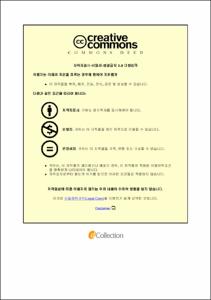Blue Growth Strategy for the Sustainable Fisheries Sector of the MIMAROPA Region in the Philippines
- Alternative Title
- 필리핀에서 미마로파 지방 지역의 지속 가능한 수산 분야에 대한 블루 성장 전략
- Abstract
- The MIMAROPA Region is an archipelagic region in the Philippines, composed 1,987 islands and islets. Its unique geographic provides advantages and disadvantages towards regional development. The region is facing isolation, limited resources, vulnerability to disasters and low economic activities. The low performance of fisheries sector of the region and the lack of strategic direction towards its management should be addressed in order to avoid a more serious problem in the future.
This study aims to develop a logical model for sustainable fisheries in the MIMAROPA Region. It capitalizes on the secondary data from different government institutions in the Philippines. It assessed the current state of the fisheries sector and provided discussions on blue growth and its components through review of related literature. The study also described the Indonesia’s blue growth strategy and drew ideas from them in developing the strategic framework for MIMAROPA.
The strategic model for sustainable fisheries complements with the vision stated under the Regional Development Plan, which is to have a competitive fisheries sector. The expected outcomes of the blue growth strategy are economic growth, poverty reduction, food security and sustainable livelihood.
The framework addresses the need to identify relationships within ecosystem and to determine policy options needed to protect and conserve the adaptive capacity of the ecosystem through an integrated coastal resources use and management plan for the region. The ICRUMP focuses on four major components namely: ecosystem-based approach, community participation, maritime spatial planning and disaster risk reduction and climate change adaptation.
In general, the aim of the framework is to ensure the health of the ecosystem and achieve balance on development and protection of the environment for the new generation. The ocean has so many uses; the fishers should act as the stewards of the ocean while the government should provide necessary support and assistance to the stewards. If we can have a healthy fisheries ecosystem, the fisheries sector can be an engine towards socio-economic growth of the region.
- Issued Date
- 2016
- Awarded Date
- 2016. 2
- Type
- Dissertation
- Publisher
- 부경대학교 글로벌수산대학원
- Affiliation
- 부경대학교 글로벌수산대학원
- Department
- 글로벌수산대학원 국제수산과학협동과정
- Advisor
- 이상고
- Table Of Contents
- Table of Contents i
List of Figures v
List of Tables vi
Abstract vii
1. Introduction 1
1.1 Problem Statement 2
1.2 Objectives 4
1.3 Significance of the Study 4
1.4 Scope and Limitation 6
2. Methodology 7
2.1 Thesis Outline 8
2.1.1Assessment of MIMAROPA Fishery Sector 8
2.1.2 Blue Growth and Fisheries Development Programs 8
2.1.3 Best Practices from Indonesia 9
2.1.4 Development of Blue Growth Framework 9
3. Study Area 10
3.1 Population and Growth 11
3.2 Physical Resources 11
3.2.1 Land Cover 11
3.2.2. Water Resources 11
3.3 Food and Poverty in MIMAROPA 14
3.4 Fishery Resources 15
3.4.1 Major Fishing Grounds 16
3.4.2 Major Fish Species Caught 17
3.4.3 Fishing Gears and Vessels 19
3.4.4 Fisheries Production 20
3.4.5 Fisheries Contribution to Economy 22
4. Review of Related Literature 22
4.1 Sustainable Development 23
4.1.1 Sustainable Fisheries Management and Ecosystem-based Approach 24
4.2 Small Scale Fisheries 27
4.3 Methodologies and Previous Studies 29
5. Blue Growth Concept, Related Programs and Activities 32
5.1 Marine and Inland Capture Fisheries 32
5.2 Aquaculture 33
5.3 Livelihoods and Food Systems 34
5.4 Economic growth for Ecosystem Services 37
5.5 Fisheries Laws and Development Programs in the Philippines 38
5.5.1 Fisheries Laws and Policies 39
5.5.2 Existing Institutional Mechanisms 42
5.5.3 Development Programs for Fisheries 47
6. Case Analysis of Indonesia’s Blue Growth Strategy 50
6.1 Blue Growth Mainstreaming in National Development Plan 52
6.2 Blue Economy Investment Model 53
6.2.1 Creating an enabling environment for action on partnership initiatives 54
6.2.2 Increasing investment and cooperation for the Blue Economy and Blue Growth 55
6.2.3 Creating confidence and enthusiasm for a sustainable Blue Economy 55
6.2.4 Establishment of MINAPOLITAN Zones 55
7. Blue Growth Strategy for MIMAROPA Region 57
7.1 Assessment and Challenges 58
7.1.1 Deteriorating Marine Ecosystems and Underutilized Aquaculture 58
7.1.2 Weak Institutional Mechanisms 63
7.1.3 Value Chain System 65
7.1.4 External Threats 68
7.2 Strategic Framework 69
7.2.1 Policy Strategies 71
7.2.2 Organizational Strategies 74
7.2.3 Programs and Projects Strategies 76
7.2.4 Research and Education 79
7.3 Implementation of Strategy 83
8. Conclusion 86
References 89
Acknowledgement 96
- Degree
- Master
- Appears in Collections:
- 글로벌수산대학원 > 국제수산과학협동과정
- Files in This Item:
-
-
Download
 Blue Growth Strategy for the Sustainable Fisheries Sector of the MIMAROPA Region in the Philippines.pdf
기타 데이터 / 803.16 kB / Adobe PDF
Blue Growth Strategy for the Sustainable Fisheries Sector of the MIMAROPA Region in the Philippines.pdf
기타 데이터 / 803.16 kB / Adobe PDF
-
Items in Repository are protected by copyright, with all rights reserved, unless otherwise indicated.